From the desk of any analyst to your first job interview, your resume and cover letter are your first impression. Everything from bullet points to font size says something about you. So, are you thinking about becoming a Business Analyst? If yes, that’s great! Perhaps this blog can serve as a helpful reference for creating your resume. Because even though we all know how strong a CV is for landing that perfect job, sometimes our attitude towards it makes us take it for granted. But trust me, no matter how trivial you might think it is, a resume can help you get hired faster than anything else. So, to give you a helping hand with your CV, we have listed below some excellent examples of a Business Analyst’s CVs with detailed explanations and tips on how to best present yourself in an interview or an application. But before we jump into the details, let’s recap what makes an ideal CV:
Business Analyst Resume Example
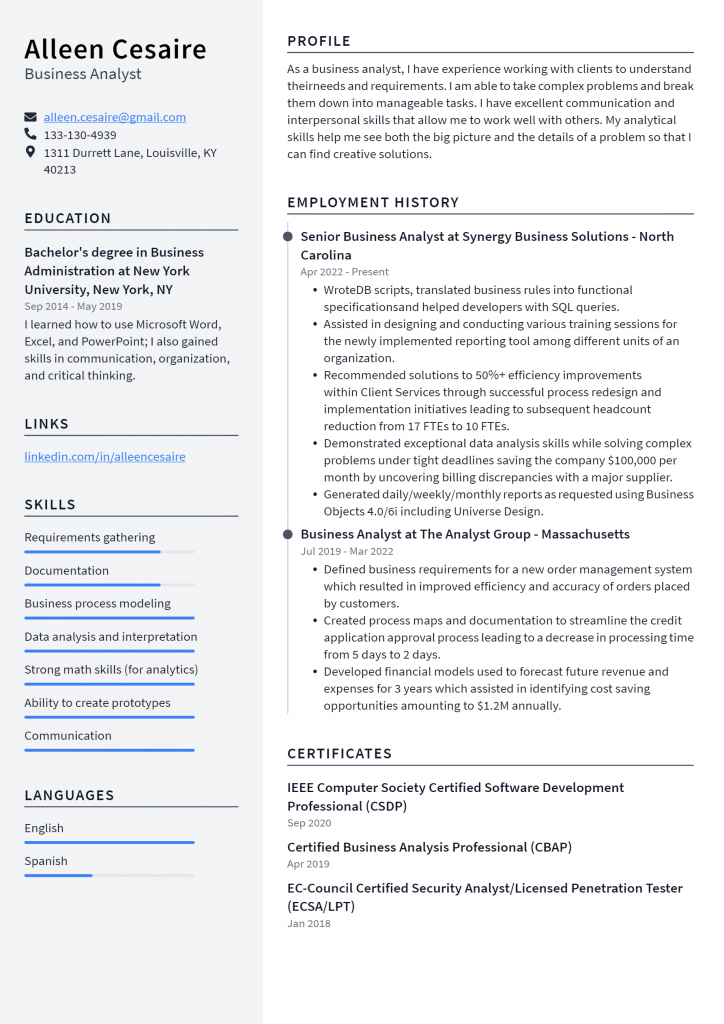
Download This Business Analyst Resume as PDF
Business Systems Analyst Resume Example

Download This Business Systems Analyst Resume as PDF
Data Analyst Resume Example
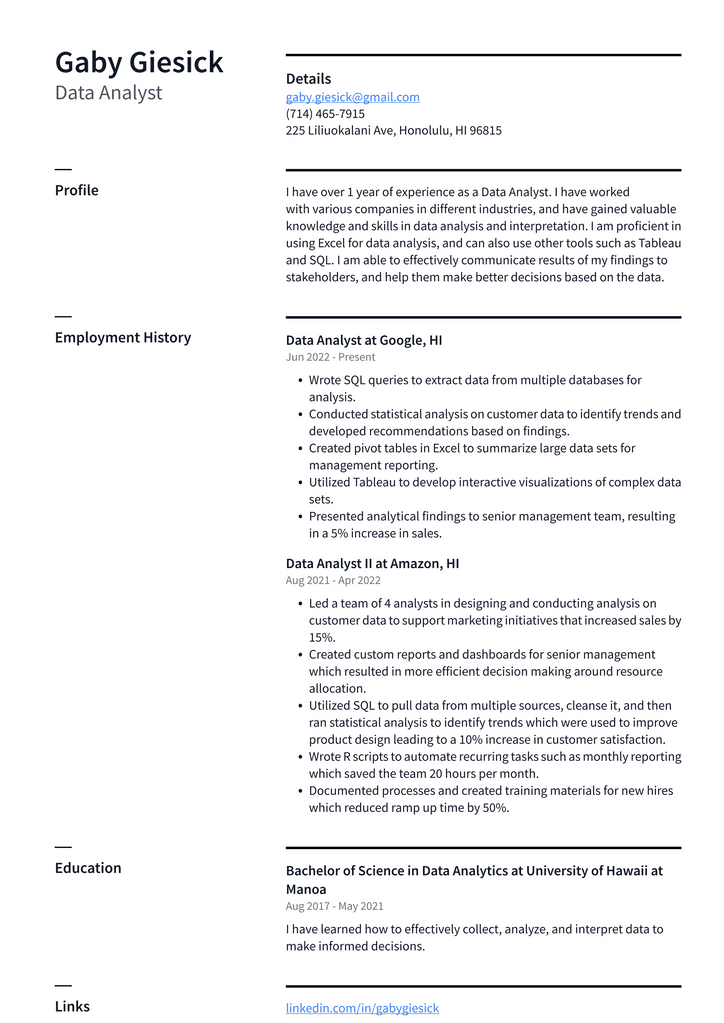
Download This Data Analyst Resume as PDF
Functional Analyst Resume Example
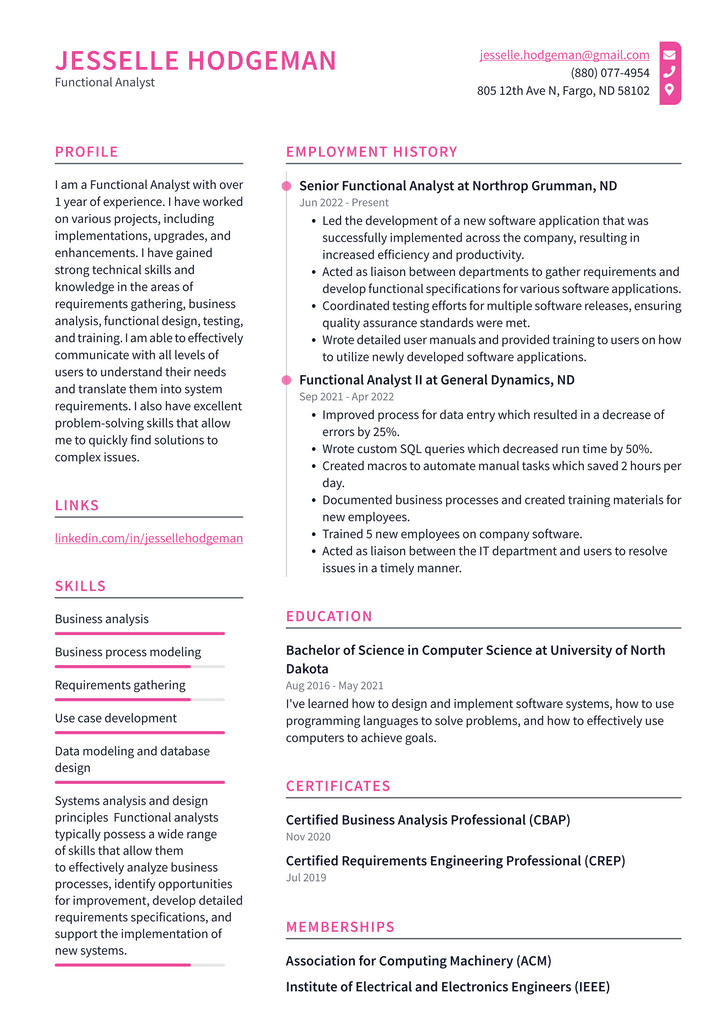
Download This Functional Analyst Resume as PDF
Systems Analyst Resume Example
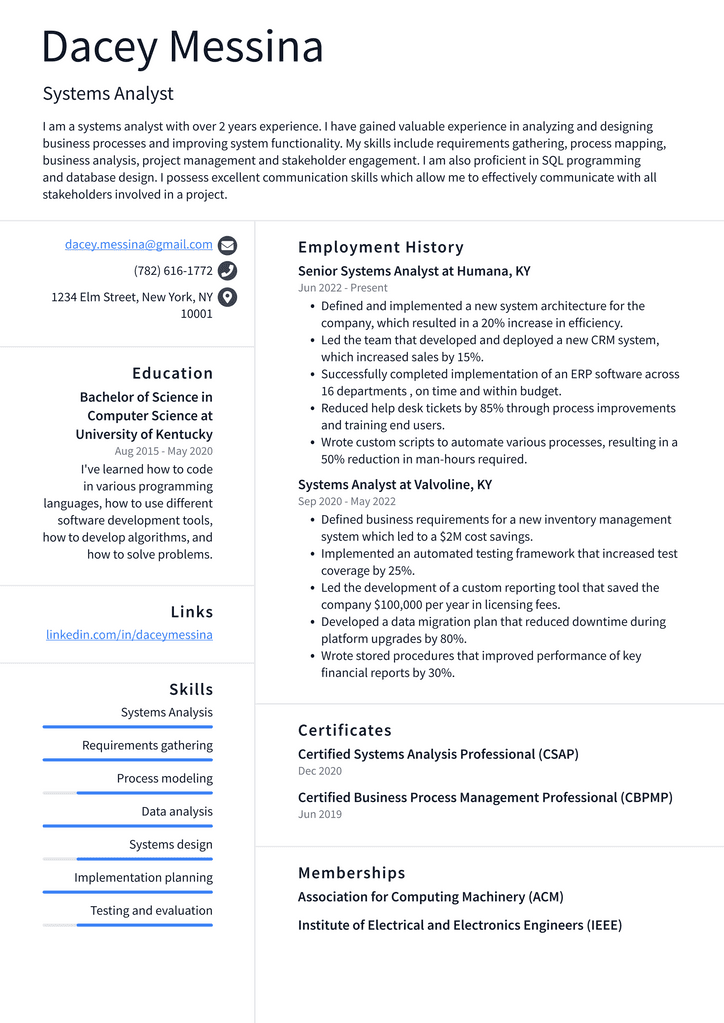
Download This Systems Analyst Resume as PDF
Business Process Analyst Resume Example

Download This Business Process Analyst Resume as PDF
Requirements Analyst Resume Example
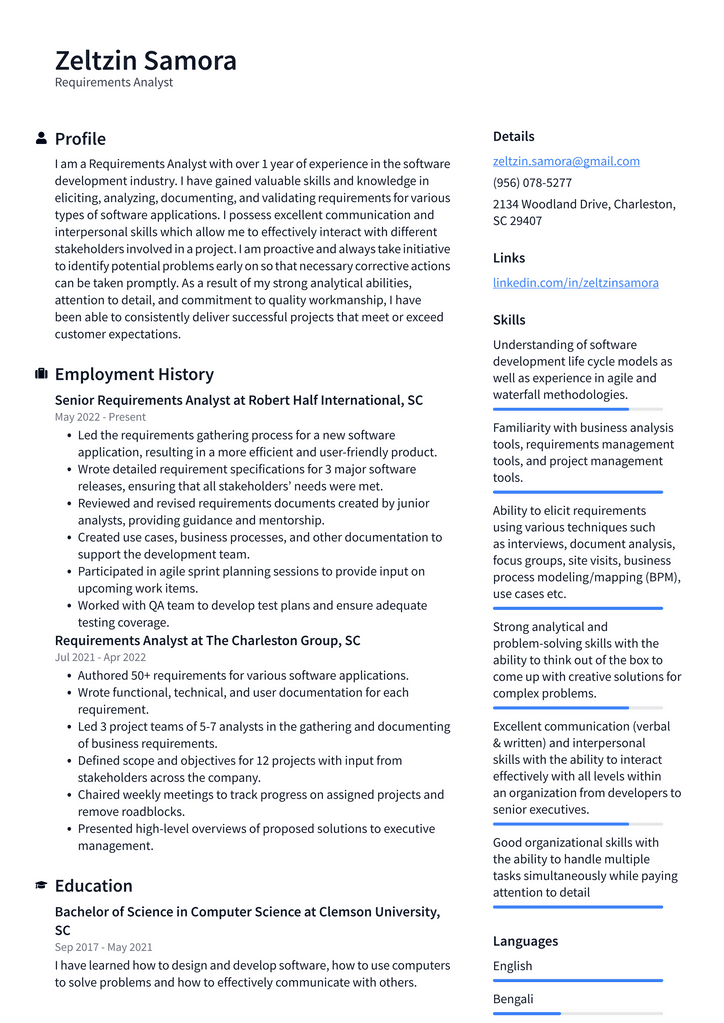
Download This Requirements Analyst Resume as PDF
A Good Resume: What Makes It Great?
Before diving into the details, let’s first answer the question: What makes a good resume? Well, there is no definite answer to this. An overview is like a penguin suit. It has to fit you, or else it’s as good as useless. In other words, a CV must be as unique as you are. There isn’t an ideal format that would fit everyone. The best resume is the one that speaks to the employer, gives him an idea of your skills, and motivates him to call you for an interview. But before you get to write the resume, you need to understand the purpose of a CV. CV is a marketing tool that should help you get your foot in the door. It is a document describing your skills, experience, and education, making the employer want to meet you. Your resume should also contain specific details about the job you are applying for, like the company’s name and the position you are interested in.
Could you keep it simple and readable?
I think it’s essential to start with this. Many people make the mistake of making their resumes too fancy or complicated. You want to leave a great first impression but do not want to overdo it. Make sure you don’t try to make your resume too fancy or complicated. You may think that making your resume look too fancy would make it stand out, but it does the opposite. Employers would just put it in the “too complicated” category and move on to the next resume. You might think your resume should be like a poem, but it shouldn’t be. Less is more. Please keep it simple, and ensure that it is easy to read. You don’t want to confuse the employer, and you don’t want to seem like a pretentious person.
Use the “Resume 101” lesson
When writing your resume, you might want to use a lesson that people learn in Resume 101. The goal of your resume is to get your foot in the door, and you want your potential employer to know all the fantastic things you can do. The best way to do that is to include a summary of your skills and other important information in a short paragraph at the top of your resume. What you write in this section is essential. You want to sell yourself to your employer, but you also don’t want to brag. Make sure you professionally write this section. You want to sound confident in your abilities, but you don’t want to say cocky.
Don’t forget to highlight your core skills
The most important thing that you have to remember before you start writing your resume is to highlight your core skills. You don’t want to write something too general. You want to write something specific and relevant to the job you are applying for. You want to show the employer that you have the skills they are looking for, and you want to do that by highlighting your core skills. You can also include your transferrable skills in your resume. You can apply transferable skills to multiple fields, like communication and problem-solving. You can use these skills to explain how you can help your employer.
Add a professional profile
You can even add a professional profile at the top of your resume. This is a short paragraph where you can write a little bit about yourself and your qualifications. This allows you to sell yourself more than you would in the summary section. You can write about your passion for the field, your educational background, and anything else you think would help you get hired.
Add your portfolio
Another thing that you can add to your resume is your portfolio. Most jobs these days require you to show proof that you can do what you say. You can create a portfolio that includes examples of your work. For example, you can write blog posts, create a website, or do anything else that would add value to people. If you have a portfolio, you can add that to your resume to show the employer that you can do what you say.
Conclusion
Your resume is the first thing an employer will see, so it’s essential to make it stand out. While there is no one-size-fits-all resume format, there are best practices for creating a resume:
- Could you keep it simple and readable?
- Use the “Resume 101” lesson.
- Don’t forget to highlight your core skills.
- Add a professional profile.
- Add your portfolio to show that you can do what you say you can do.
- Don’t forget to proofread your resume before sending it out.
Following these tips can create an excellent resume that will help you land your dream job.